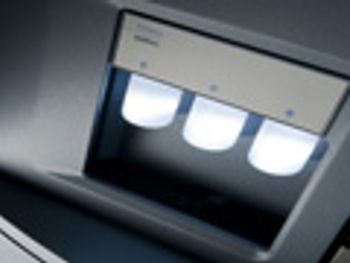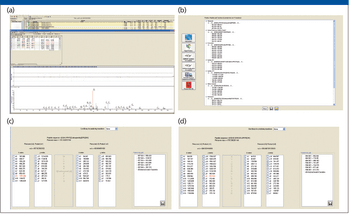
Special Issues
The ability to characterize protein therapeutics throughout the product development cycle is discussed.

Special Issues
The ability to characterize protein therapeutics throughout the product development cycle is discussed.

Special Issues
The accurate diagnosis of renal allograft rejection currently depends upon a biopsy. Transplant medicine would benefit greatly from the availability of noninvasive tests for early detection of rejection and immunosuppressive drug therapeutic monitoring. Only a limited number of studies have been published to date on specific proteins associated with allograft rejection. Typically, renal dysfunction due to humoral transplant rejection or other pathologies results in the increase of protein excreted in urine (1–5). In blood, endogenous peptides (not generated by trypsin digestion ex vivo) are likely candidate biomarkers for many diseases and pathologies as they are secreted from tissues and enter the bloodstream (6,7). The analysis of endogenous protein and peptide fragments in urine can provide a noninvasive, early indication of kidney transplant rejection or disease.

Special Issues
The paramount problem in performing absorption, distribution, metabolism, and excretion (ADME)/pharmacokinetic studies of therapeutic oligonucleotides revolves around inefficient and labor-intensive sample preparation. These traditional methods require multiple steps - liquid–liquid extraction (LLE) and solid-phase extraction (SPE) - to extract therapeutic oligonucleotides from serum and plasma for liquid chromatography–mass spectrometry (LC–MS) analysis and thus are not practical for clinical studies with large numbers of samples. Furthermore, these methods tend to yield low recoveries and poor reproducibility. This article presents a revolutionary new method for performing sample cleanup of therapeutic oligonucleotides from serum and plasma. The method extracts many types of therapeutic oligonucleotides from biological matrices in a rapid four-step SPE protocol that eliminates the need for LLE and can be automated for large sample sets. In the testing presented, different..

Special Issues
Liquid chromatography coupled with tandem mass spectrometry (LC–MS-MS) is the primary bioanalytical technique used today within the pharmaceutical industry for the quantitation of small molecules in biological matrices such as plasma. In recent years, chromatographic resolution has been improved with the development of ultrahigh-pressure liquid chromatography (UHPLC) systems that utilize smaller diameter particles (< 3 μm) and operate at pressures > 5000 psi. While most LC systems utilized for this application are optimized for columns with internal diameters (i.d.) between 2.0 and 4.6 mm, a new UHPLC system designed for microbore columns (≤ 1 mm i.d.) has been introduced recently. This article will discuss the advantages of using a microbore UHPLC system coupled with a tandem mass spectrometer for the quantitation of in vivo pharmacokinetic samples. These advantages include reduced sample and solvent consumption, improved chromatographic resolution and speed, and reduced mass spectrometer source..

Special Issues
Determining an organic compound's structure from its mass spectrum is challenging. If, as in the case of soft ionization - chemical ionization (CI), atmospheric pressure chemical ionization (APCI), field ionization (FI), electrospray (ES), atmospheric pressure photoionization (APPI), or fast atom bombardment (FAB) - the mass spectrum only provides the mass of the intact molecule, the challenge can be even greater. At best, an elemental composition can be determined if the measured mass is sufficiently accurate; however, many of these elemental compositions represent large numbers of compounds. There are 127 compounds in the NIST08 Mass Spectral Database that have the elemental composition C10H20O. Without an accurate mass measurement, the challenge is even more overwhelming. The elemental composition C10H20O has a nominal mass of 156 Da. The NIST08 Mass Spectral Database has 684 compounds with this nominal mass. To get past this point of an elemental composition, fragmentation of the ion..

Special Issues
In this article, we review the capabilities and challenges of deploying mass spectrometry (MS) to homeland security screening requirements. The fidelity of MS for chemical analysis is well accepted; however, the effectiveness of an overall system in real-world work environments depends on solving big challenges in sample collection, speed of analysis, and ease-of-use, and maintaining continuous reliability. We compare MS to the more commonly used security method of ion mobility spectrometry (IMS) and illustrate the significant improvements that MS can provide. We then describe one of the first introductions of MS in homeland security, that being the screening of people for concealed explosives using a walk-through portal device.